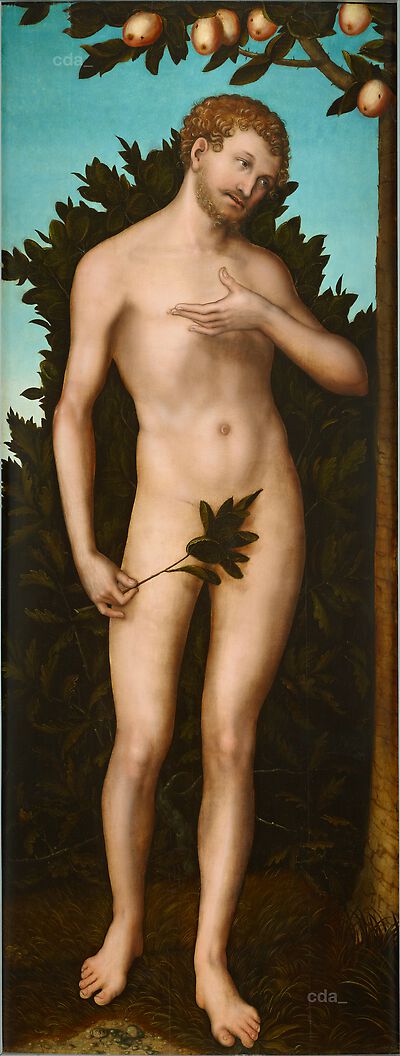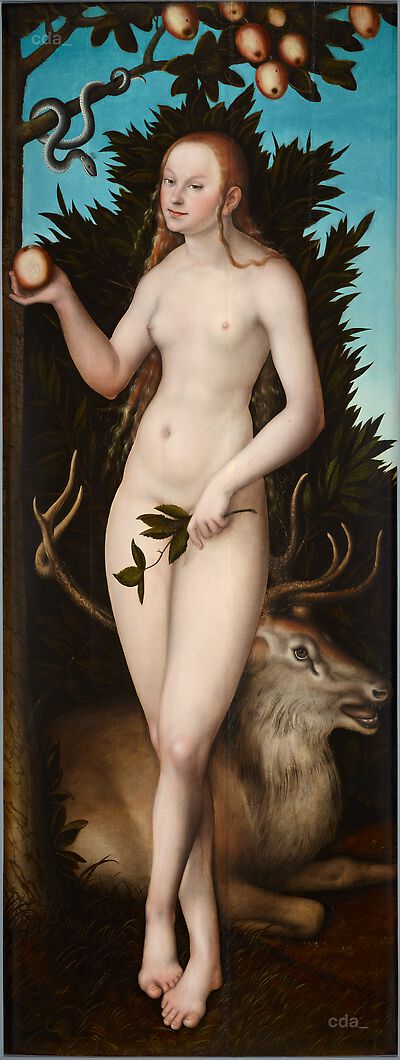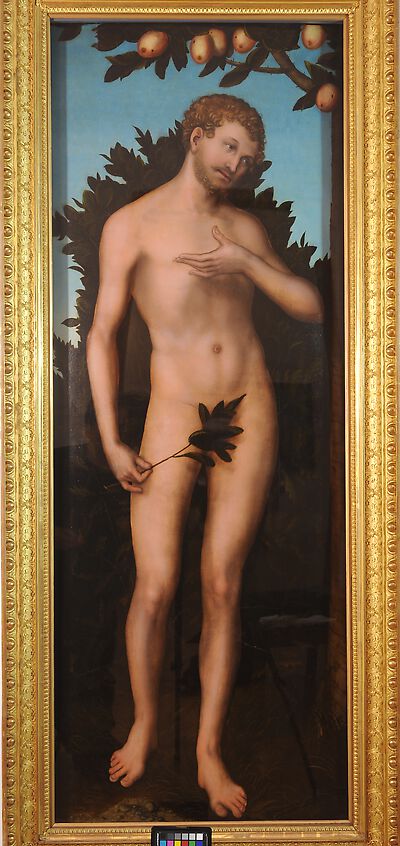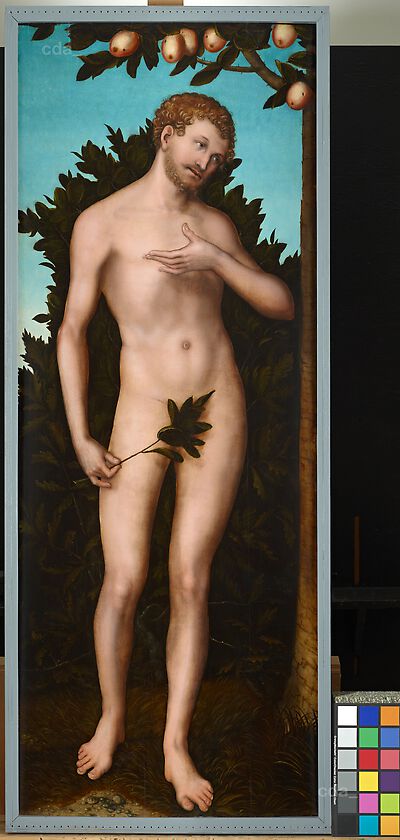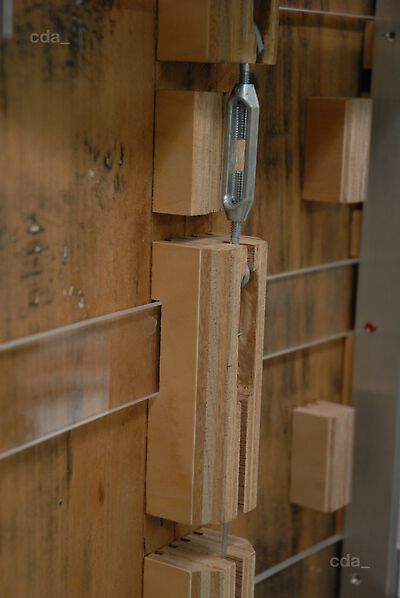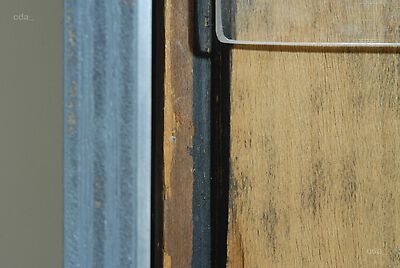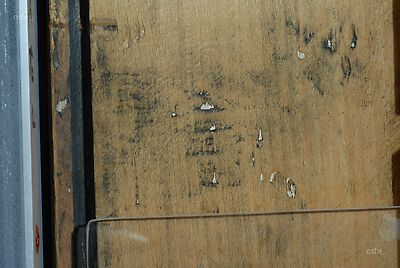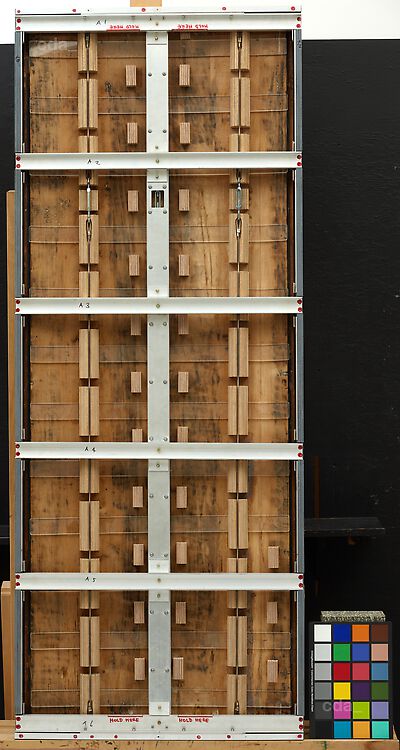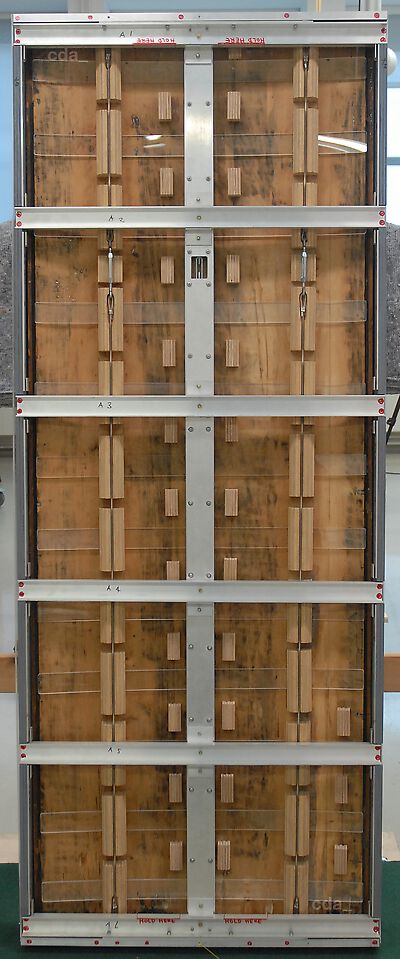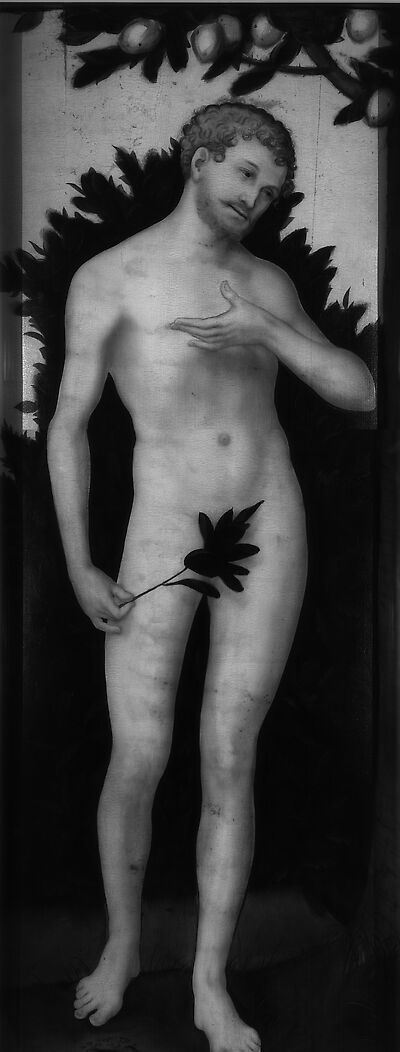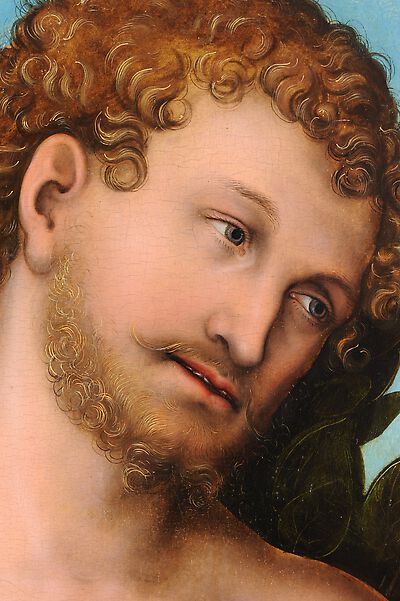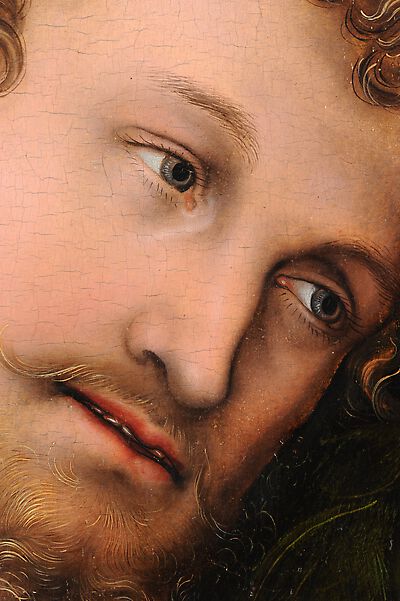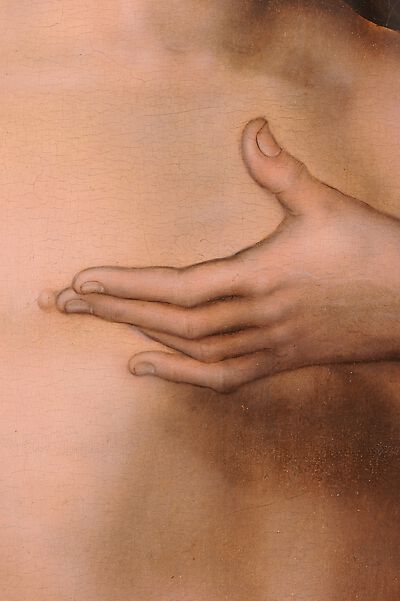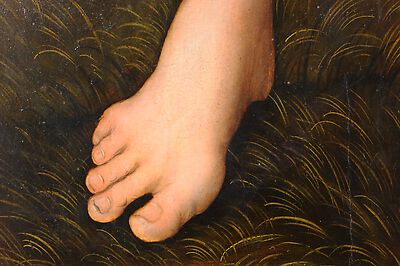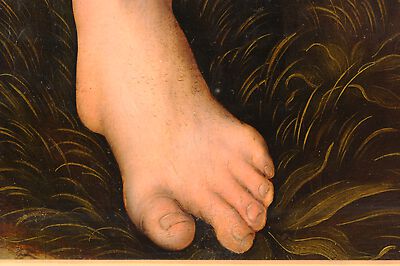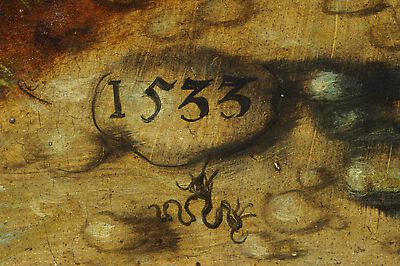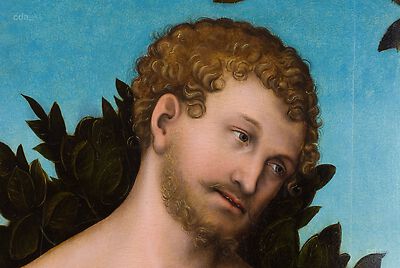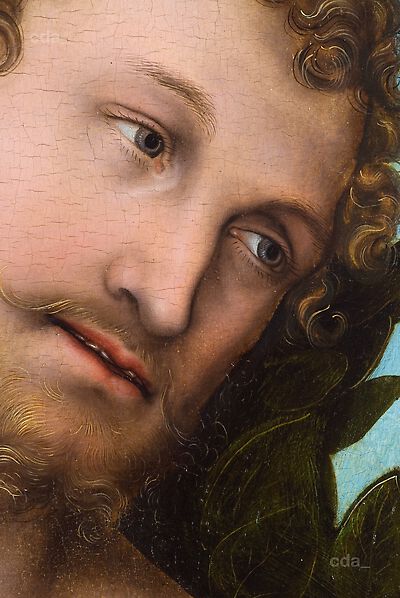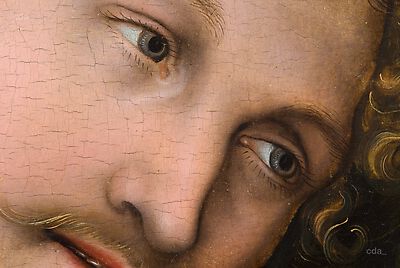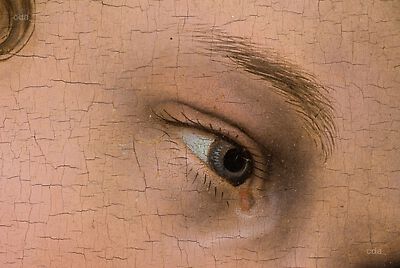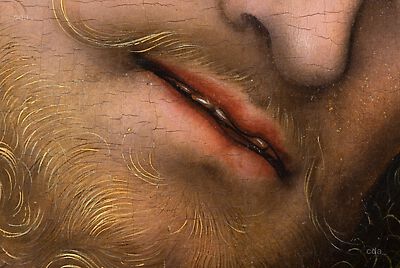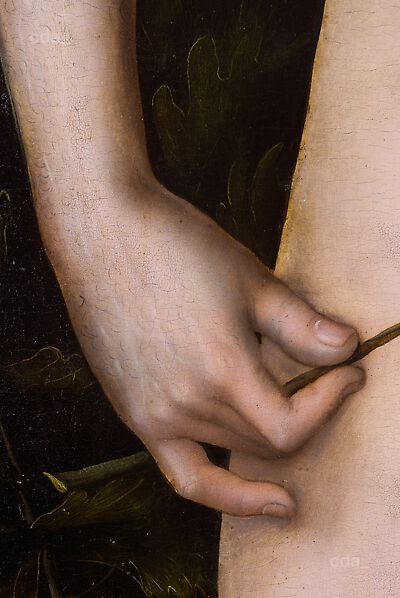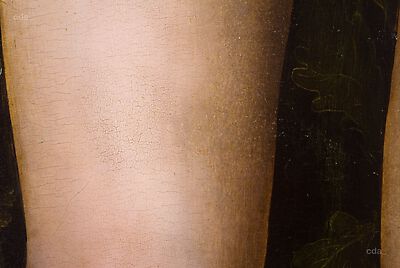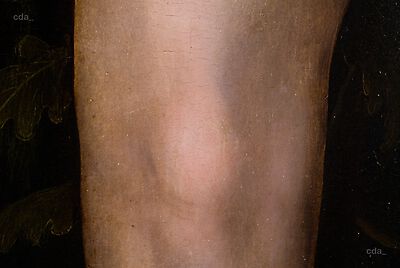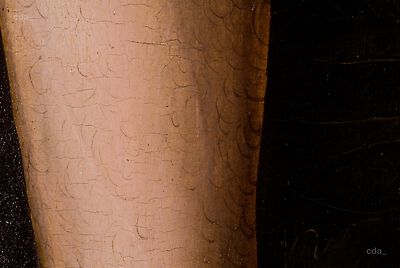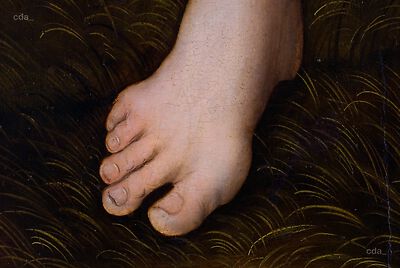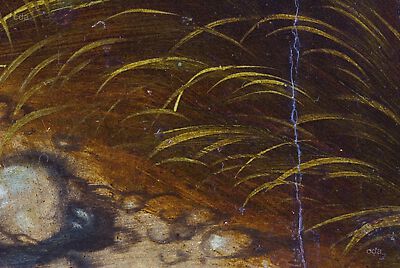Support
- lime wood (Tilia sp.). Identification of wood species, Peter Klein, report from the 26.10. 2013
- to a large extent without knots, presumably a tangential cut
- five planks, butt-joined, rebate along all four sides
- plank widths: I: 16.1, top/15.5, bottom, II: 13.0, bottom/10.5, top, III: 13.2, top/9.8, bottom, IV: 14.3, top/13.8 bottom, V: 14.2 bottom/12.2 top
- marks from a block-plane - obilque to the direction of the grain - are documented on a photograph in the archive; the reverse was smoothed during the treatment in Japan (1985), remnants of a black coating (applied while the panel was fitted in an engaged frame), see photograph
- the joins were not originally reinforced
- no marks from fittings, rebate width: 14-15mm, depth: 6-12mm, thickness at the edge of the panel: 6mm
Ground and Imprimatura
- white, presumably chalk/glue (not tested)
- thin
- the ground extends to the edge of the panel, no barbe visible
- no imprimatura was visible in either macro or microscopic examination
Underdrawing
- an economical underdrawing executed with a brush is visible in IR; beneath the flesh paint there is practically none; the hair and the leaves are loosely executed with a broader brush
- faintly visible to the naked eye in the background (e. g. under the apples)
- minor adjustments were made to the position of the fingers
- there is no evidence that the design was transferred, but we assume that it was traced because the figure is positioned within the composition without any corrections
Paint Layers and Gilding
Figure:
- an initial ochre wash was applied to the white ground. At this stage the wash was probably selectively removed to create highlights by exposing the ground. Subsequently shadows were defined employing a cool browish-grey that was blended into the highlights. After this layer had dried a vermilion/ochre/white admixture was applied wet-in-wet and was in part scumbled over the greyish-brown to create a mother-of-pearl-like flesh tone. This tone created the half-shadows. The dark brownish grey underpaint was retained for the shadows. Highlights employing a vermilion/lead white admixture were in part blended into the wet flesh tone and some additional light grey accents were added. Finally fine contours and hair were added in brown tones. The hair was initially painted with a layer of ochre, at the same time the curls were modelled wet-in-wet in dark ochre tones. After the drying process linear highlights and contours were added.
Sky: a light blue (admixture of blue and white) was applied to the white ground. In the upper section of the painting this same blue paint was dabbed on thicker.
Areas of grass: initial dark brown layer, subsequently a semi-opaque green paint was applied to roughly indicated the texture of the grass, finally lines were added to indicate single blades of grass
Background: blackish-green opaque underpaint, followed by the green shape of the leaves, linear accents and contours were applied wet-in-wet, finally green glazes (now brown) were added.
Flesh paint: brush applicatiom, semi-opaque, glazed, dabbed
Sky: brush application, in part semi-opaque, dabbed
Background: brush application, opaque, glazed
- pointed brush of mid-range in width. The paint application is thin to very thin in the flesh paint. Otherwise semi-opaque to opaque application, with some thick contours.
- the green glaze has turned brown
Framing
- not original, first half of the 19th century, 1985 altered
- dimensions: 192.5 x 83.8 x 18 cm
- coniferous wood
- gilded profile frame, classical stucco ornamentation, addtion (14 cm) attached to the reverse to facilitate fitting it into the display case
[Museum der bildenden Künste, 06.11.2013]
- examined by Andreas Mieth
